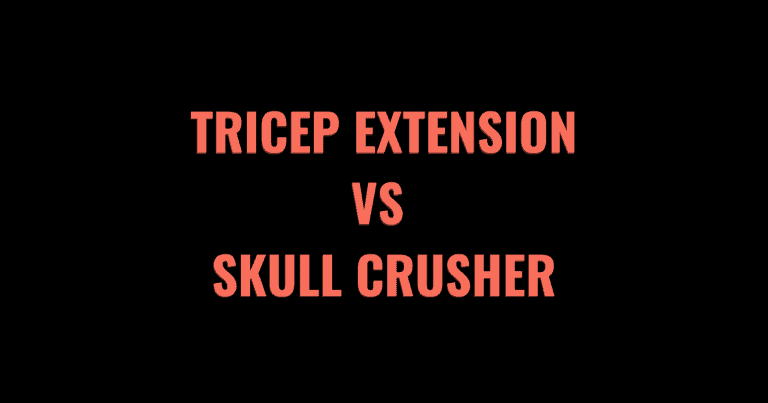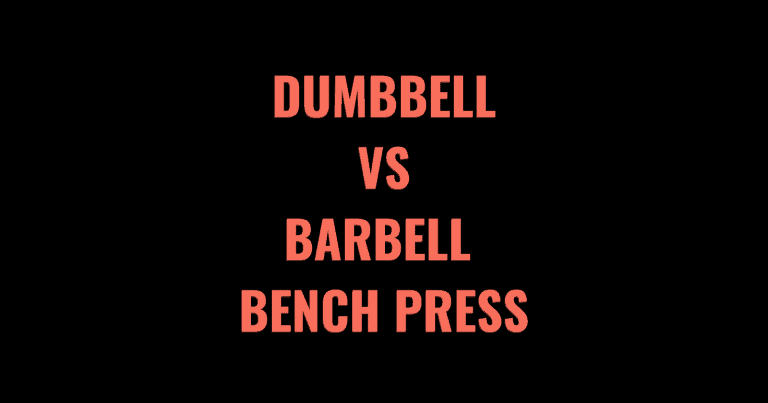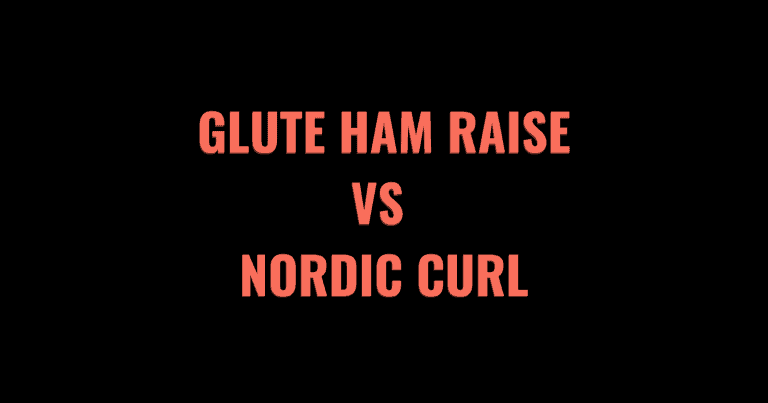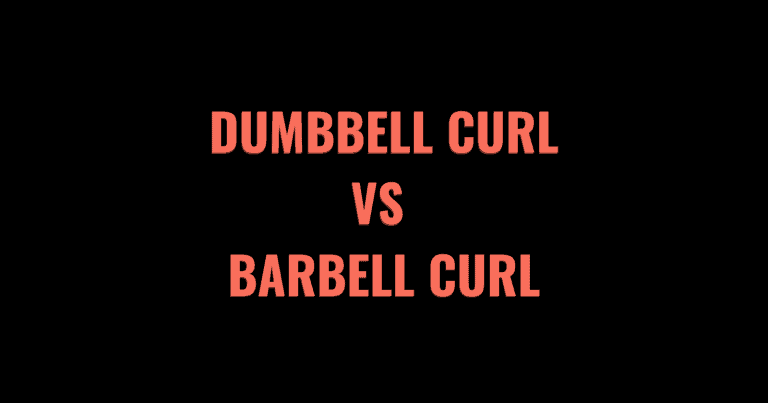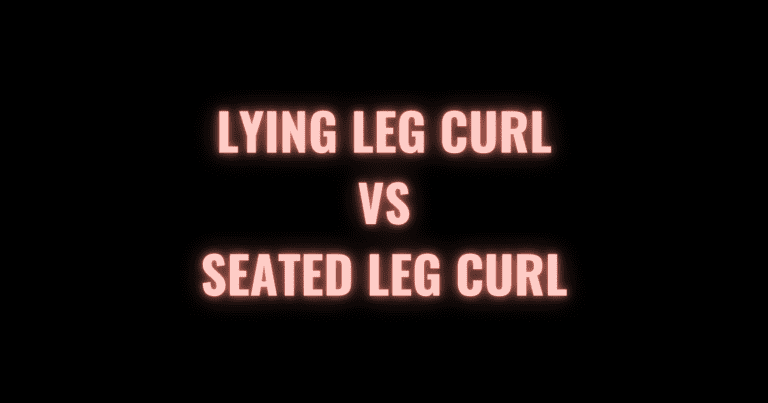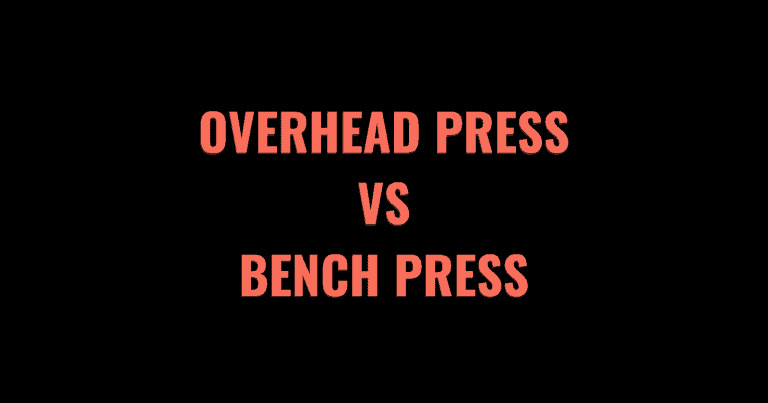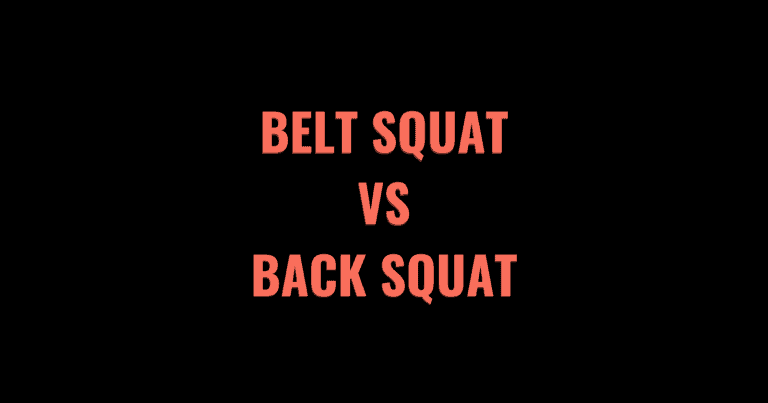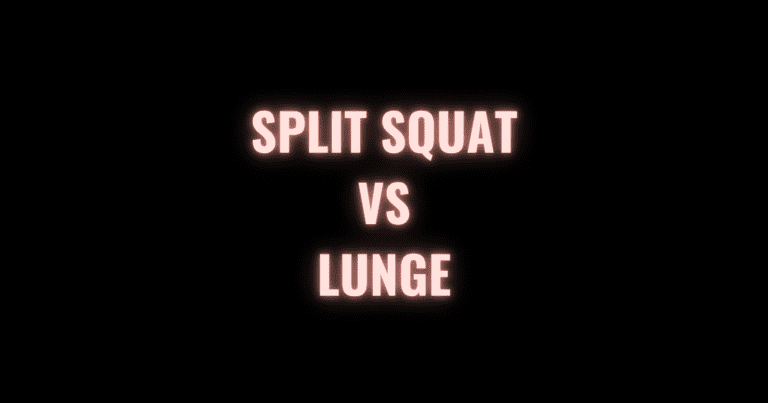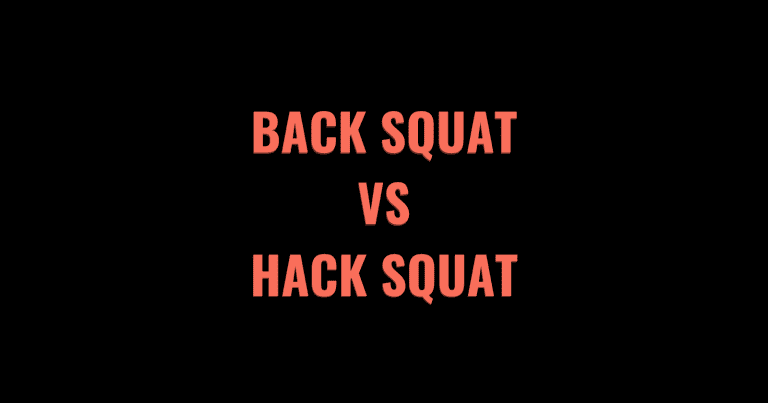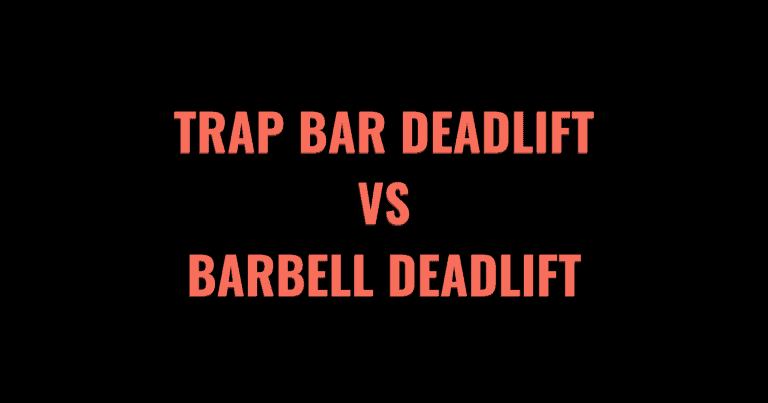What’s the first thing that comes to mind when someone asks, “what’s the best exercise for building a bigger and stronger chest?” More often than not, the barbell bench press will be the answer. However, there are countless exercises you can use to achieve this goal.
One of the most underrated chest-building exercises is the dip. Depending on how the dip is performed, you can target more of the chest or more of the triceps. Either way, it’s a great compound exercise to perform if you want to develop an impressive upper body.
Since the barbell bench press and dips both target the chest, triceps, and shoulders, you may be wondering…
Which one is better for strength, performance, or aesthetics?
If you barbell bench press, are dips even necessary?
Is one better for chest development?
What about tricep development?
How should you program each movement into your routine?
Are there any safety concerns?
In today’s article, we will be comparing two of the most popular upper body exercises — dips versus barbell bench press. More specifically, we will be covering the pros and cons of each, how to perform them correctly, what muscle groups are involved, and which one may be better for you.
Keep reading to find out the answers to these commonly asked questions!
Table of Contents
- 1 What’s the main difference between dips and the bench press?
- 2 Pros and Cons
- 3 When to Perform an Exercise
- 4 Muscles Used
- 5 Exercise Form
- 6 Dips vs Barbell Bench Press: Should You Do Both?
- 7 Other Exercise Comparison Posts
- 7.1 Tricep Extension vs Skull Crusher: Pros and Cons
- 7.2 Dumbbell vs Barbell Bench Press: Differences and Pros & Cons
- 7.3 Glute Ham Raise vs Nordic Curl: Differences and Benefits
- 7.4 Barbell Curl vs Dumbbell Curl: Benefits & Differences
- 7.5 Concentration Curl vs. Bicep Curl: Which Exercise Should I Be Doing?
- 7.6 Lying Leg Curl vs Seated Leg Curl: Pros & Cons
- 7.7 Overhead Press vs. Bench Press: Pros, Cons, & Differences
- 7.8 Belt Squat vs. Back Squat: Pros & Cons
- 7.9 Split Squat vs Lunge: Differences & Benefits
- 7.10 Hack Squats vs. Back Squats: Pros and Cons
- 7.11 Romanian Deadlift vs Deadlift: Which is Better?
- 7.12 Trap Bar Deadlift vs. Barbell Deadlift: Is One Better?
What’s the main difference between dips and the bench press?
The main difference between dips and the barbell bench press is that dips develop and strengthen the lower chest more than a barbell bench press. In comparison, the barbell bench press targets the upper, middle, and lower chest evenly.
Furthermore, most people are stronger on the barbell bench press than on dips. If your goal is to increase strength, a barbell bench press is a better option, especially since it’s one of the three lifts used in powerlifting competitions.
However, even though you’re stronger on a bench press, dips are a more functional exercise. They will have greater carry over to other sports and activities of daily living. There are numerous times when you’ll perform a similar motion to a dip to go from a seated to a standing position.
Not to mention, dips are one of the most common exercises in CrossFit and gymnastics. Performing dips will help you learn total body control and stability. They can easily be scaled up or down in difficulty so nearly anyone can do them and progress.
So if you’re an athlete that wants to work on their shoulder mobility and stability while increasing the strength and size of their chest and triceps, the dip is a superior exercise.
Here’s a great video from Functional Fitness that highlights some of the main differences between the bench press and dips.
Pros and Cons
Dips Benefits
Here are some benefits of dips:
- Dips are a compound exercise that builds and strengthens the chest, triceps, and shoulders.
- It’s a great way to improve the stability and mobility of the shoulder girdle.
- You don’t need a spotter and can safely train to failure.
- If your lower chest is lagging, dips are a great way to improve that area and a better option than the barbell bench press.
- Dips can be performed using a variety of equipment, including parallel bars, rings, and even a bench.
- It’s a free weight exercise, so you are not limited to the path of motion of a machine.
- By leaning forward or backward, you can target different muscle groups more or less. For example, the more upright you are, the more your triceps will be involved. The more you lean forward, the more your chest will be engaged.
- You can perform dips just using your body weight and can easily adjust the difficulty by adding weight or reducing weight by using resistance bands.
- Compared to the barbell bench press, dips are a more functional movement.
- Dips are a good accessory exercise to the barbell bench press. They have good carry-over and are less fatiguing. For those that want to increase volume, pack on some size, and not hinder recovery, dips are a good option.
Dips Cons
Here are some disadvantages of dips:
- You’re limited by the amount of weight you can add to a weight belt.
- The bottom position of a dip can place your shoulders in an unfavorable position. Going past 90 degrees may increase your risk of injury. Film yourself to ensure you are doing the movement properly and not going past your active range of motion.
- You’re not as strong doing dips compared to a barbell bench press.
- Dips are not one of the three lifts used in powerlifting. If you have any plans to compete, dips would be less valuable than the barbell bench press.
For effective alternatives to the tricep dip, check out our recommended tricep dip alternatives.
Bench Press Benefits
Benefits of performing the bench press include:
- The barbell bench press is one of the most effective exercises for increasing chest, tricep, and shoulder strength as well as size.
- You can change the angle of the bench to target different areas of the chest, including incline, decline, and flat.
- If you have access to dumbbells you can train one arm at a time to prevent strength or muscular imbalances.
- Nearly every gym has the necessary equipment to perform this exercise. All you need is a barbell, a squat rack, and a bench.
- The bench press is commonly used in various sports to measure strength, including powerlifting, CrossFit, strongman, and football.
- You can move a lot of weight doing a barbell bench press, which is great for progressively overloading the chest, triceps, and anterior delts.
- It’s a free weight exercise, so you are not limited to the path of motion of a machine.
Bench Press Cons
Disadvantages of performing the bench press include:
- If you want to train to failure, then you will need a spotter and may need a lift-off.
- It’s not as functional as dips. There are very few instances when you will be lying flat on a surface and will have to push something off of you.
- Most Olympic barbells weigh 35-45 lbs. This may be unrealistic for some beginners if they are unable to lift the weight of the bar.
- For a barbell bench press, the range of motion is limited by your body. The more of an arch (a bench press arch is achieved by retracting the shoulders and arching your upper and lower back so it creates space between the lifter’s back and the bench) you have the less the bar will have to move. This may be good for lifting a large amount of weight but isn’t ideal for hypertrophy.
- It places more strain on the lower back, especially if you use a big arch.
- The bench press is more fatiguing than a dip, so it will take longer to recover.
When to Perform an Exercise
When to perform Dips
Anyone wanting to increase the size, strength, and upper body mobility should consider doing dips. This exercise can be performed during upper body, chest, and/or push workouts.
Since dips are a compound exercise, but they aren’t as demanding as a bench press, you can perform them at the beginning, middle, or even at the end of a workout. It’s quite common for bodybuilders and powerlifters to use them as their last chest exercise to add extra volume.
Dips are an excellent accessory exercise to the barbell bench press. You can either do dips and bench press in the same session or at separate times. If you train them in the same workout, it’s a good idea to do the bench press before dips.
Dips can be trained using a higher or lower rep range, but ideally within the 6-12 reps range. Depending on how often you train chest, you can perform dips multiple times per week and utilize different rep ranges to yield various results.
If you are going to train dips heavy and are a more advanced trainee, it’s a good idea to invest in a weight belt.
When to perform the barbell bench press
Unlike dips, the barbell bench press is a very taxing exercise, so perform them at the beginning of the workout. The barbell bench press is a better option for anyone looking to maximize their upper body strength and build their chest, shoulders, and triceps.
If you compete in strength sports, it’s important to do the barbell bench press frequently to become more efficient. Performing them anywhere from 2-3 times per week is ideal. The barbell bench press can be trained in a variety of rep ranges, including 1-5 reps for strength, 6-12 for hypertrophy, and even 12-20 for muscular endurance.
It’s quite common for the bench press to be programmed on chest, upper body, or push days. Some powerlifters even have sessions dedicated to squat, bench, and deadlifts since that’s what they have to do on meet day.
Muscles Used
Dips Muscles Used
Dips primarily target the lower and middle portion of the chest, also known as the sternocostal head, and triceps brachii. But they also engage the upper chest (the clavicular head), pectoralis minor, anterior delts, lats, rotator cuff muscles, and forearms.
Primary
- Lower & Middle Chest
- Sternocostal Head
- Triceps Brachii
- Lateral Head
- Long Head
- Medial Head
Secondary
- Upper Chest
- Clavicular Head
- Shoulders
- Anterior Deltoid
- Forearms
- Rotator Cuff Muscles
- Supraspinatus
- Infraspinatus
- Teres Minor
- Subscapularis
- Latissimus Dorsi
- Pectoralis Minor
Bench Press Muscles Used
The bench press primarily works the entire chest (sternal and clavicular head) and triceps brachii, but it also engages the pectoralis minor, anterior delt, lats, forearms, rotator cuff muscles, rhomboids, and traps.
Primary
- Pectoralis Major
- Sternocostal Head
- Clavicular Head
- Triceps Brachii
- Long Head
- Medial Head
- Lateral Head
Secondary
- Pectoralis Minor
- Shoulders
- Anterior Delt
- Rhomboids
- Rotator Cuff
- Teres Minor
- Subscapularis
- Infraspinatus
- Supraspinatus
- Traps
- Latissimus Dorsi
- Forearms
Exercise Form
How to perform Dips properly
There are several ways to perform dips, but in this example, we are going to cover the bodyweight parallel bar dip, since it’s the most common.
- All you need to do this exercise is parallel bars and your body! Ideally, the bars should be slightly wider than shoulder-width apart.
- Grab the parallel bars and jump up until your arms and body are fully extended.
- Bend your knees until they are at a 90-degree angle and cross one leg over the other. Your legs should stay in this position throughout the entire movement.
- Take a deep breath and begin to bend your elbows while leaning slightly forward. The more forward you lean the more you will target your chest.
- Once your arms form a 90-degree angle, pause for a brief second, then begin to press up to straighten your arm by contracting your chest and triceps. Be careful not to go past 90-degrees at the bottom position to prevent excessive strain on the shoulders.
- Your arms should be fully extended before repeating the movement for the desired number of reps.
Watch this video from Jeff Nippard to see how to perform dips correctly and common mistakes to avoid!
How to perform the Bench Press properly
In the example below, we will be explaining how to do a flat barbell bench press. There are several variations, but this is the most common.
- To do this exercise you will need a flat bench, Olympic barbell, Olympic plates, and a spotter.
- Adjust the height of the rack so there’s a slight bend in your arms when you grab the barbell. This will allow you to safely unrack and re-rack the barbell.
- Lay down on the bench and plant your feet on the ground. Your head, upper back, and butt should stay planted on the bench at all times. The barbell should be directly above your eyes.
- Firmly grab the barbell using a slightly wider than shoulder-width grip. Your wrists should remain straight (knuckles facing up throughout the movement). At heavier weights, wrist wraps can be used to help keep your wrists in the proper position.
- Before unracking the barbell, pull your shoulders down and back by contracting your lats, traps, and rhomboids. There should be a slight arch in your lower back.
- Unrack the barbell by extending your arms and moving the barbell away from the rack until it’s in line with your nipples.
- Take a deep breath and begin to lower the barbell by bending your elbows. Keep your elbows slightly tucked (about 45 degrees, relative to your torso) to avoid excessive strain placed on the shoulder.
- Lower the barbell until it touches your chest. Pause for a brief moment before pushing the barbell up and back by extending your arms and contracting the chest and triceps.
- Once your arms are fully extended (elbow should be almost completely locked-out) repeat for the desired number of reps.
Check out this video from Buff Dudes to see what’s the correct way to bench press!
Dips vs Barbell Bench Press: Should You Do Both?
Although dips and the barbell bench press target the same muscles, their similarities end there. Both exercises offer different benefits, and it’s no surprise that nearly everyone with an impressive chest has dips and bench presses in their routine.
Whether you decide to do dips, the barbell bench press, or both, perfect your form before adding weight. If you can’t do a bodyweight dip yet, you can use resistance bands, prop your feet up on a bench, or use a dip machine to begin your progression.
The barbell bench press reigns supreme for building strength and size. On the other hand, dips improve your shoulder mobility, are more functional, and can improve the size and shape of the chest and triceps. These exercises complement each other so well that incorporating both into your routine would be worth your while.
Other Exercise Comparison Posts
If you enjoyed this post, check out our comparisons of other popular exercises below.
